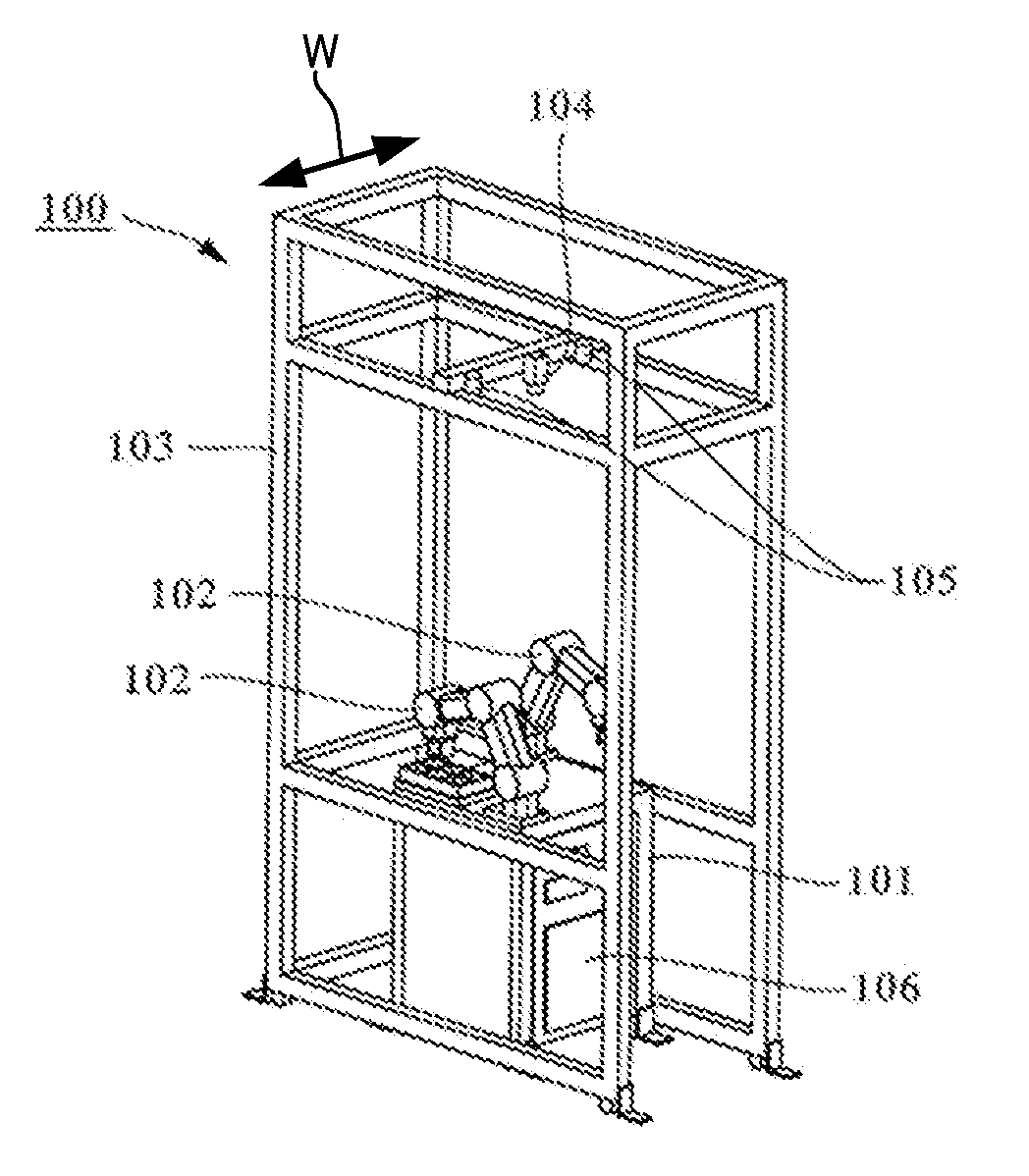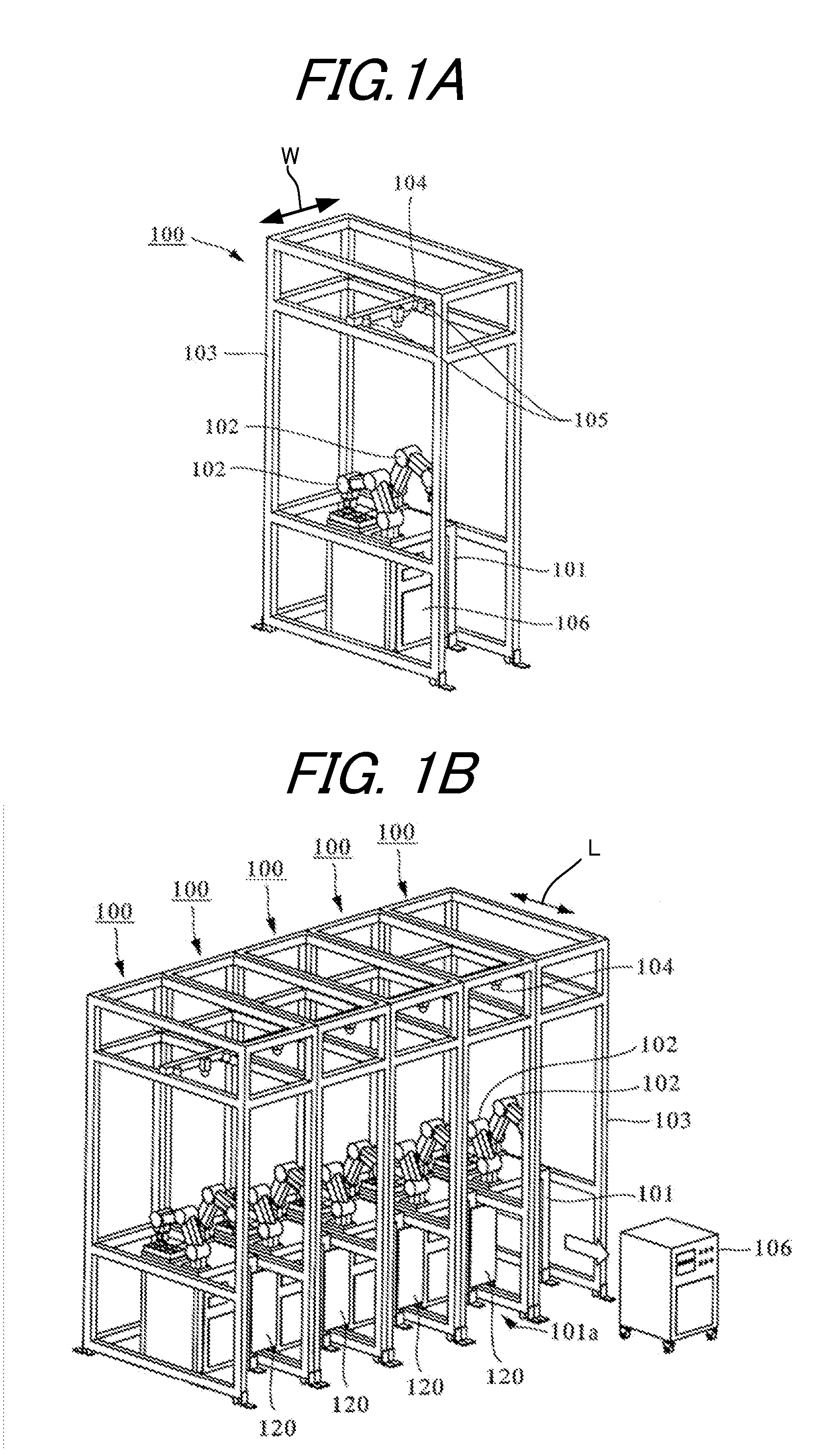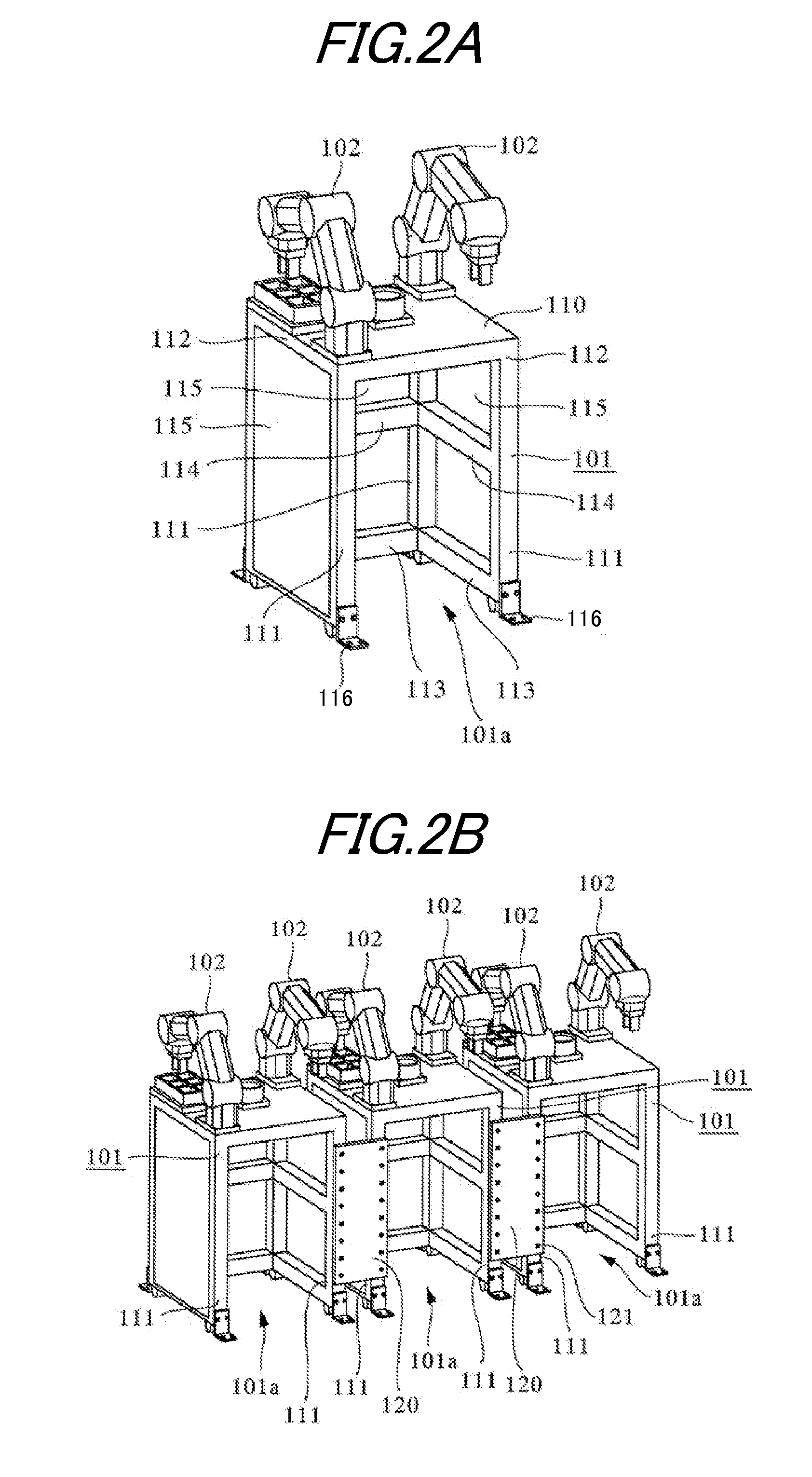Robotic cell
a robot and cell technology, applied in the field of robot cells, can solve the problems of assembly failure, less advantageous use of robot stations, lower workability, etc., and achieve the effect of high rigidity and high maintainability of a trestl
- Summary
- Abstract
- Description
- Claims
- Application Information
AI Technical Summary
Benefits of technology
Problems solved by technology
Method used
Image
Examples
first embodiment
[0023]FIGS. 1A and 1B illustrate a robotic cell according to a first embodiment of the present invention. This apparatus is configured by combining multiple robotic stations 100 on each of which a robot for assembling parts is mounted. Referring to FIG. 1A, each robotic station 100 mainly includes a trestle 101, a pair of robotic arms 102 constituting the robot, a booth 103, a camera 104, and illumination lamps 105. Referring to FIG. 1B, the robotic cell serving as a serial production system is built by combining the multiple robotic stations 100.
[0024]Each booth 103 is a frame constructed by rigid pillars so that the trestle 101 is housed therein and the camera 104 is fixed thereto in order to measure the position and posture of workpieces and fed parts in a work space on the trestle. A width of the booth 103 in a width direction W is set to a value enough to space apart the trestle 101 and each pillar of the booth 103 with no contact therebetween. Further, a length of the booth 10...
second embodiment
[0035]FIG. 4 illustrates a robotic cell according to a second embodiment of the present invention. The second embodiment is different from the first embodiment only in that a connecting member 130 is used. The connecting member 130 is different from the connecting member 120 in the method for connection to the pillars 111 of the trestles 101 of the adjacent robotic stations 100. In this embodiment, the connecting member 130 is arranged between the pillars 111 of the adjacent trestles 101. Then, both end portions 130a of the connecting member 130 are respectively brought into surface contact with opposing surfaces 111a of the pillars 111, and those components are fastened to each other. Accordingly, the adjacent trestles 101 are rigidly coupled to each other to increase the rigidity of the trestles 101.
[0036]In a case where two opening portions are provided on two side surfaces of each trestle, respectively, one more connecting portion using the connecting member is only added, and t...
PUM
| Property | Measurement | Unit |
|---|---|---|
| volume | aaaaa | aaaaa |
| speed | aaaaa | aaaaa |
| area | aaaaa | aaaaa |
Abstract
Description
Claims
Application Information
 Login to View More
Login to View More - R&D
- Intellectual Property
- Life Sciences
- Materials
- Tech Scout
- Unparalleled Data Quality
- Higher Quality Content
- 60% Fewer Hallucinations
Browse by: Latest US Patents, China's latest patents, Technical Efficacy Thesaurus, Application Domain, Technology Topic, Popular Technical Reports.
© 2025 PatSnap. All rights reserved.Legal|Privacy policy|Modern Slavery Act Transparency Statement|Sitemap|About US| Contact US: help@patsnap.com



